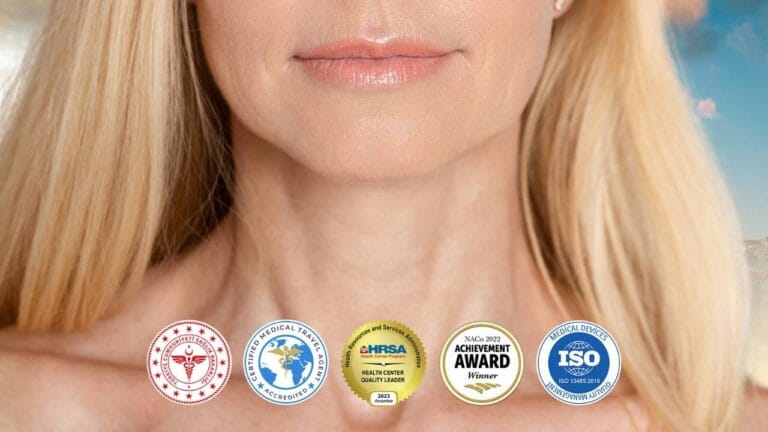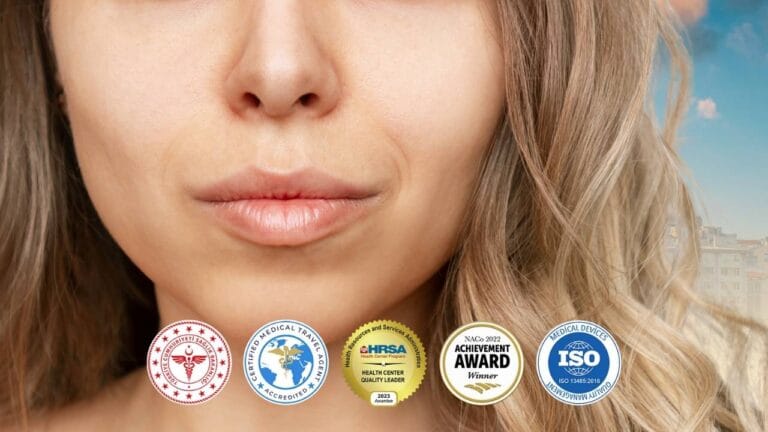The average Lower Facelift Surgery Turkey Cost 2026 provides a high-value opportunity for patients seeking to reverse gravity’s effect on the jawline without the steep prices of Western healthcare. We understand the specific frustration of “jowls”—the sagging tissue that squares off the face and creates a tired appearance—and offer precise solutions to restore a defined, youthful contour.
Why Skin-Only Lifts Fail: Understanding the SMAS
To understand why modern facelifts look natural, one must understand facial anatomy. Many older techniques or “quick fixes” rely on pulling the skin tight. While this removes wrinkles temporarily, it often results in a “windblown” or “pulled” look and the results last only a short time because skin is elastic and will stretch back out.
A true, long-lasting lower facelift addresses the Superficial Musculo-Aponeurotic System (SMAS). This is a layer of fibrous tissue and muscle located deep beneath the skin. By tightening, lifting, and repositioning the SMAS layer, we provide structural support to the face. The skin is then redraped gently over this new foundation without tension, resulting in a natural, refreshed appearance that lasts for years.
Clinic Care Center: Expert Warning (The “Joker” Smile)
A major fear for patients is the ‘lateral sweep’ or ‘Joker smile’ caused by poor surgical vectors. This happens when skin is pulled horizontally instead of vertically. At Clinic Care Center, we respect natural anatomy. Our surgeons lift the tissues vertically (against gravity) to restore the jawline without distorting the mouth. We also strictly monitor the Marginal Mandibular Nerve to ensure your smile remains symmetrical and functional.
Lower Facelift Cost Turkey 2026 vs. UK/USA
| Procedure Scope | Turkey Price (All-Inclusive) | UK/USA Price (Surgery Only) | Target Area |
|---|---|---|---|
| Mini Lower Facelift (S-Lift) | $3,000 – $4,000 | $8,000 – $12,000 | Mild Jowls (Minimal Incision) |
| Full Lower Facelift (SMAS) | $4,500 – $6,000 | $15,000 – $25,000 | Heavy Jowls & Jawline Definition |
| Lower Face + Neck Lift Combo | $5,500 – $7,500 | $20,000 – $35,000 | Jawline + “Turkey Neck” Correction |
| Deep Plane Facelift | $6,000 – $8,500 | $25,000 – $50,000 | Advanced Structural Rejuvenation |
What is Included in the Package?
We aim to make your surgical journey as seamless as possible. Our packages are designed to cover the essential medical and logistical needs:
- Hospitalization (typically 1-2 nights) with 24/7 nursing care.
- General Anesthesia and all operating theater fees.
- Surgeon and Anesthesiologist fees.
- VIP Transfers between the airport, hotel, and hospital.
- Accommodation in a 4-5 star hotel for recovery.
- Pre-operative blood tests and cardiac clearance.
However, you must budget for these commonly overlooked Hidden Costs: Face Compression Garment (Must be worn 24/7 for 1 week), Lymphatic Drainage Massages (Crucial for reducing hardness/edema), and Scar Gel (Silicone gel for incision healing).
Frequently Asked Questions (FAQ)
Where are the scars located?
In a standard lower facelift, the incisions are discreetly placed to minimize visibility. The incision typically begins in the hairline at the temples, continues around the ear (following the natural cartilage curve), and ends in the lower scalp behind the ear. Once healed, these scars are well-hidden by your hair and the natural creases of the ear.
Does a lower facelift fix my neck too?
A lower facelift primarily targets the jowls and the jawline. While it provides some improvement to the upper neck, it does not fully correct significant neck laxity or “turkey neck” (platysmal bands). For comprehensive rejuvenation, most patients choose the Lower Face + Neck Lift Combo to ensure the neck matches the refreshed look of the jaw.
How long does the numbness last?
It is normal to experience numbness around the cheeks, ears, and jawline after surgery due to the repositioning of tissues. This sensation typically resolves gradually over 3 to 6 months as the sensory nerves regenerate. It is rarely permanent.
Can I combine this with Eyelid Surgery?
Yes, combining a Lower Facelift with Blepharoplasty (Eyelid Surgery) is very common. Since the lower lift does not address the eyes or forehead, adding eyelid surgery provides a more balanced, full-face rejuvenation in a single recovery period.
How many years younger will I look?
We prefer to manage expectations realistically. The goal is to look “refreshed” and “rested,” roughly equivalent to how you looked 8–10 years ago. We do not promise that you will look like a teenager. The aim is to turn back the clock while maintaining your unique character and identity.
Is general anesthesia required?
Yes. Because we are working on the deeper SMAS layer and often combining procedures (like neck lifting), General Anesthesia is the safest option. It ensures your airway is protected and you remain completely comfortable and still throughout the delicate dissection process.
Restore Your Jawline, Keep Your Character
You want to look like the best version of yourself, not a different person. If you are ready to address sagging jowls with a safe, SMAS-based approach, contact Clinic Care Center. Send us your photos for a confidential assessment and a customized 2026 cost breakdown.




